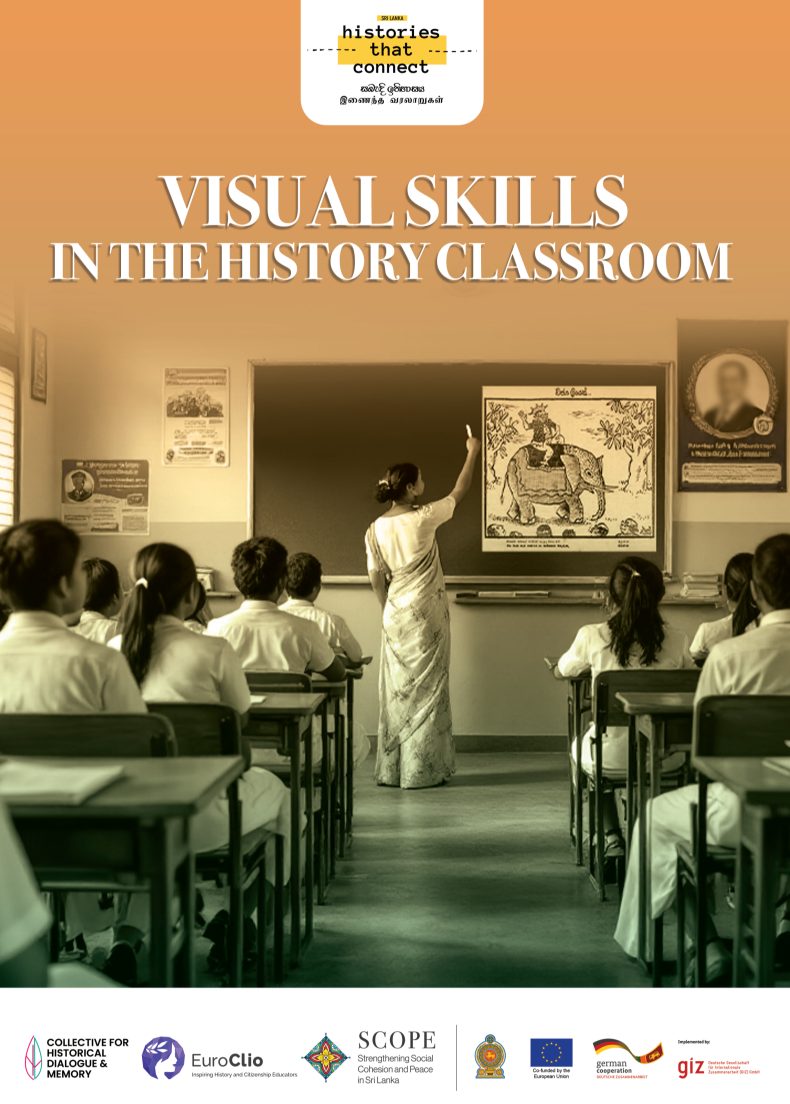In this practice, Patrizia Seidl presents the use of cards that act as tools in scaffolding to allow students access to the amount of support they feel they need in discussions of historical phenomena. Those more familiar with a topic or with higher cognitive ability have access to cards with more complex information, while those who struggle with grasping the same information can use more simplistic cards.
The Practice
This practice is suitable for students aged 12-18 with diverse learning needs. It is a practice composed of a variety of steps, and as such it might take more than one standard (45 minutes) lesson.
The first step of the practice is for the teacher to create complex historical learning tasks. Usually, such task is to make a narration of a certain big historical topic (example: ‘International protests and demonstrations’). As a part of this first step, the teacher creates cards where there is a picture on 1 side and text on the other side. For each image, the text I divided in two parts. There is a simple information (a name, a date, or a place), and there is a longer (usually one sentence) text. In this way, students with diverse learning needs are helped by the same card in the tackling the task. In the case of our example about protests in 20th/21st century, one side might contain the image of a protest banner, and the other the name of a “famous protester” and a short biography. This first preparation step, usually, takes place before the beginning of the lesson.
The second step of the practice involves directly the students: students, divided in groups of maximum 5, receive a paper with one question per side, reflecting the task. In the case of our example, they might receive the task to establish whether the protest is finished or still ongoing, and whether the problem is necessary/good or if it is dangerous/not necessary. They are asked to work in groups and try to answer the question. At this point, the teacher takes the cards deck and puts it visible, in a part of the classroom, inviting groups or students that might need help in tackling the task to go and pick as many as they like.
The third step consists in discussing group narrations with the whole class. It is a highly important step, because it fosters critical thinking and ability to discuss within the classroom.
As a final step, students write their own cards, basing on the results of their narrations and on “follow-up questions” discussed within groups. Following the example, the question should be; “What is currently an issue and what could lead to a protest in the future?”. From Patrizia’s experience found that “German” students wrote about Trump and fears relevant to Western civilization whereas students with a Turkish background wrote about protests for and against Erdogan.
Obstacles and lessons learned
During initial trials of the practice, Patrizia used only difficult cards with long portions of text on one side. As some students were struggling with this, she decided to create an easier option, and developed the cards with alternative options, which are the ones that she uses now.
As it is the case with all scaffolding methods, Patrizia also discovered that students need to be trained on how to use cards. They, for example, might not feel comfortable in getting up and going to the teachers’ desk to pick up cards. For this reason, Patrizia usually explains students how scaffolding cards work at the beginning of the school year. Another method that she uses to encourage students to take the supporting cards if they feel they need them is to put the deck at the bottom of the class, or on one side. In this way, students do not feel afraid or judged if they stand up. Also working in groups help, because students taking the cards are “doing it for the group”, and not for themselves.
Another challenge Patrizia faced in the implementation of the practice was the fact that some students had controversial opinions about certain events. For example, one of her students (from an Arabic migration background) found that the April boycotts against Jewish were not dangerous and quite good. When faced with different opinions the teacher must be confident to deal with them, explaining to the students why the reasoning is flawed, and teaching about the values and human rights that some opinions might be clashing with.
The effect of the practice
This practice has two effect, a short and a long term one. On the short term, students face tasks and challenges with a positive attitude, knowing that if they need support they can look for it in the scaffolding cards. On the long run, students learn how to structure their study and approach to tasks, and they start needing less and less cards to do so.
About the interviewee
Patrizia Seidl works for an inclusive school in Germany which has many students from a various different migration backgrounds, as well as students with special needs in learning and behavioural problems.
Within the project Strategies for Inclusion, she has been a Special Interest Group Member for the group “Motivation and Learner Variability”.
Background to the project
Along with Hamburg University and the Council for Teacher Training in Hamburg, Patrizia wanted to broaden the horizon for inclusive education. They found that there is a lack of good practices which discuss most recent historical events.
Patrizia developed this approach in the context of wider research being conducted by Hamburg University on the development of Complex Learning Tasks and Scaffolding in order to professionalise teachers for working inclusively. The use of cards is just one of many scaffolding techniques that Patrizia uses with her pupils, together with, for example, the use of interactive timelines or of HistVlogs, both presented in this collection of practices.
Additional Information
Scaffolding Cards are created using coloured paper and plastic foil, so that they can be re-used in more lessons.
Written by Alice Modena (EuroClio) on the basis of input provided by Patrizia Seidl in the framework of the project Strategies for Inclusion on 27 July 2018.





